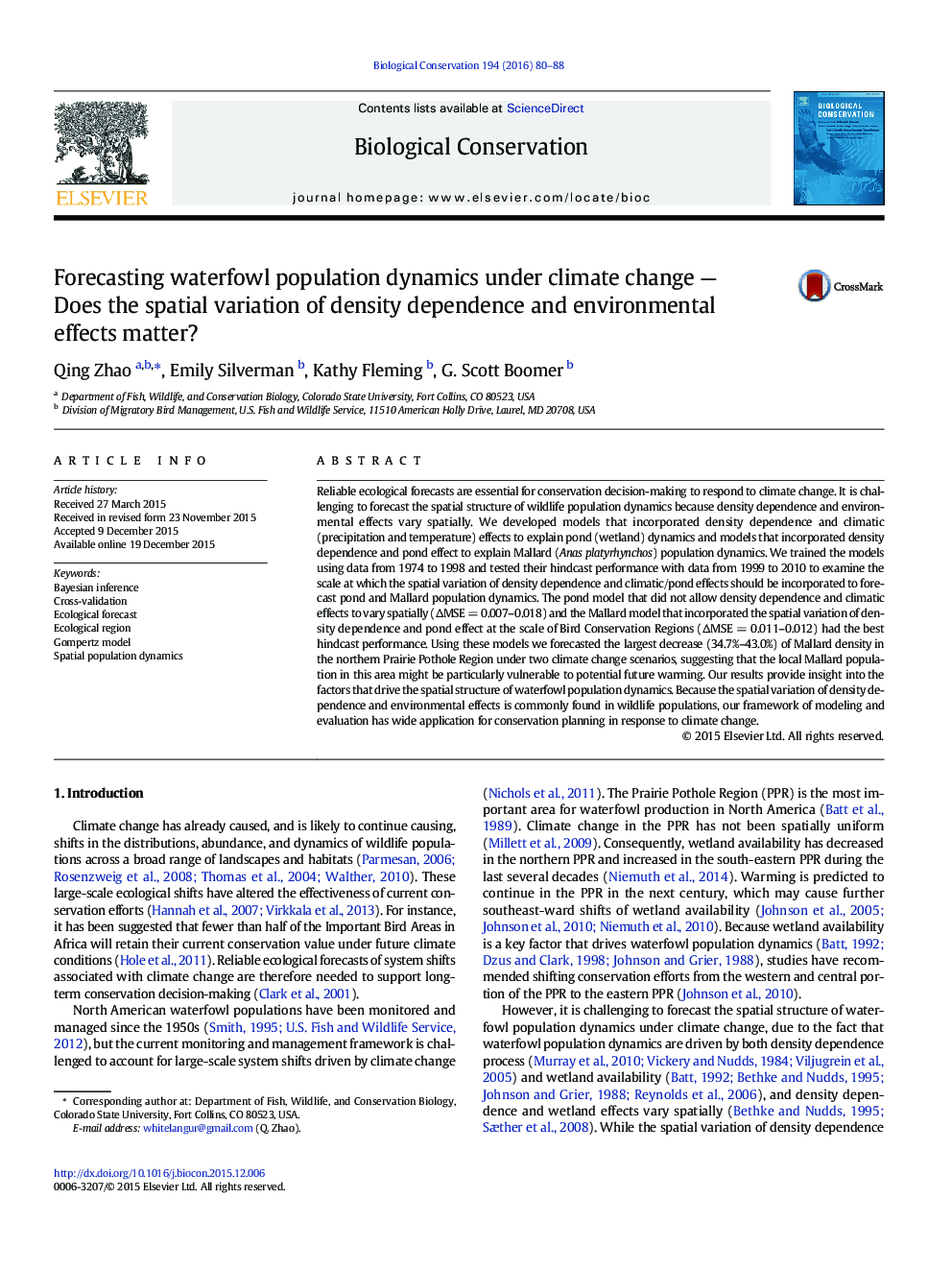| کد مقاله | کد نشریه | سال انتشار | مقاله انگلیسی | نسخه تمام متن |
|---|---|---|---|---|
| 6298782 | 1617907 | 2016 | 9 صفحه PDF | دانلود رایگان |
عنوان انگلیسی مقاله ISI
Forecasting waterfowl population dynamics under climate change - Does the spatial variation of density dependence and environmental effects matter?
ترجمه فارسی عنوان
پیش بینی جمعیت پوسیدگی آبزیان تحت تغییرات اقلیمی - آیا تغییرات فضایی وابستگی چگالی و اثرات محیطی مهم است؟
دانلود مقاله + سفارش ترجمه
دانلود مقاله ISI انگلیسی
رایگان برای ایرانیان
کلمات کلیدی
استنتاج بیزی، اعتبار سنجی متقابل، پیش بینی زیست محیطی، منطقه اکولوژیک، مدل گومپرتز، دینامیک جمعیت فضایی،
موضوعات مرتبط
علوم زیستی و بیوفناوری
علوم کشاورزی و بیولوژیک
بوم شناسی، تکامل، رفتار و سامانه شناسی
چکیده انگلیسی
Reliable ecological forecasts are essential for conservation decision-making to respond to climate change. It is challenging to forecast the spatial structure of wildlife population dynamics because density dependence and environmental effects vary spatially. We developed models that incorporated density dependence and climatic (precipitation and temperature) effects to explain pond (wetland) dynamics and models that incorporated density dependence and pond effect to explain Mallard (Anas platyrhynchos) population dynamics. We trained the models using data from 1974 to 1998 and tested their hindcast performance with data from 1999 to 2010 to examine the scale at which the spatial variation of density dependence and climatic/pond effects should be incorporated to forecast pond and Mallard population dynamics. The pond model that did not allow density dependence and climatic effects to vary spatially (ÎMSEÂ =Â 0.007-0.018) and the Mallard model that incorporated the spatial variation of density dependence and pond effect at the scale of Bird Conservation Regions (ÎMSEÂ =Â 0.011-0.012) had the best hindcast performance. Using these models we forecasted the largest decrease (34.7%-43.0%) of Mallard density in the northern Prairie Pothole Region under two climate change scenarios, suggesting that the local Mallard population in this area might be particularly vulnerable to potential future warming. Our results provide insight into the factors that drive the spatial structure of waterfowl population dynamics. Because the spatial variation of density dependence and environmental effects is commonly found in wildlife populations, our framework of modeling and evaluation has wide application for conservation planning in response to climate change.
ناشر
Database: Elsevier - ScienceDirect (ساینس دایرکت)
Journal: Biological Conservation - Volume 194, February 2016, Pages 80-88
Journal: Biological Conservation - Volume 194, February 2016, Pages 80-88
نویسندگان
Qing Zhao, Emily Silverman, Kathy Fleming, G. Scott Boomer,
